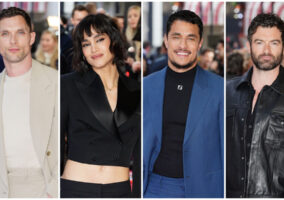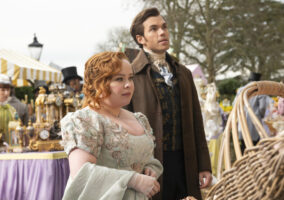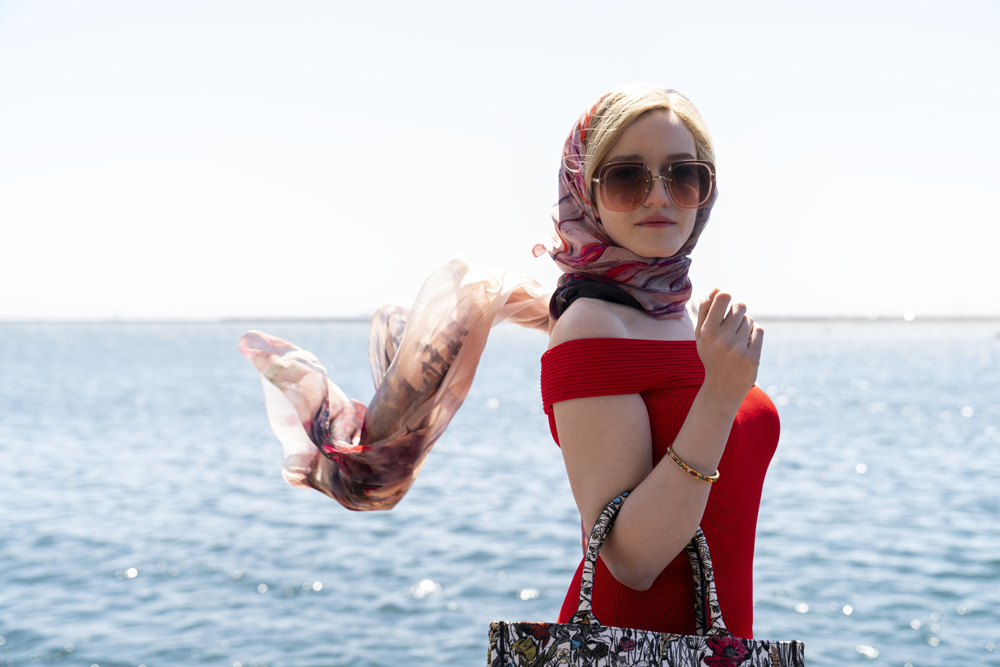
We were all over Inventing Anna, Shonda Rhimes’ adaptation of the story of master scam artist and fake German heiress Anna Delvey (played in the series by Julia Garner) from the moment we reported on the first location shots that became available back in Fall 2020. We noted back then that “the costume designer really nailed the kind of pretentious label-slinging and somewhat poor styling of someone who’s working a scam and trying to project a totally false image of herself. This look is kind of awful, but we suspect that’s the point of it.”
Well, had we known then that the costume designer was Lyn Paolo, the Emmy Award winner known for defining the sartorial look of such shows as ER, The West Wing, Scandal, How to Get Away with Murder, and Shameless, we might not have considered it worthy to point out how smart the costume design seemed. We would only needed to have pointed you to her IMDB page and impressively iconic C.V. We were thrilled when she agreed to take time out from working on another Shonda Rhimes project currently shooting in London so we could ask her all about the particulars of contemporary costume design, the differences between creating a character and recreating a person, and what lengths she went to in order to recreate the high-fashion, outrageously curated, meticulously documented wardrobe of Anna Delvey, aka Anna Sorokin.
Lyn, thank you for taking the time to talk to us today. I’m going to start off with a fairly broad question, just point you in the direction, and let you ramble. We’ve interviewed a lot of costume designers, but most of the time our conversations are about using costume design to create fictional characters. I would love if you could talk about the difference between creating an Annalise Keating or an Olivia Pope through costume design and doing costumes for someone like Anna Sorokin, who was not only a real person, but whose style is so well documented.
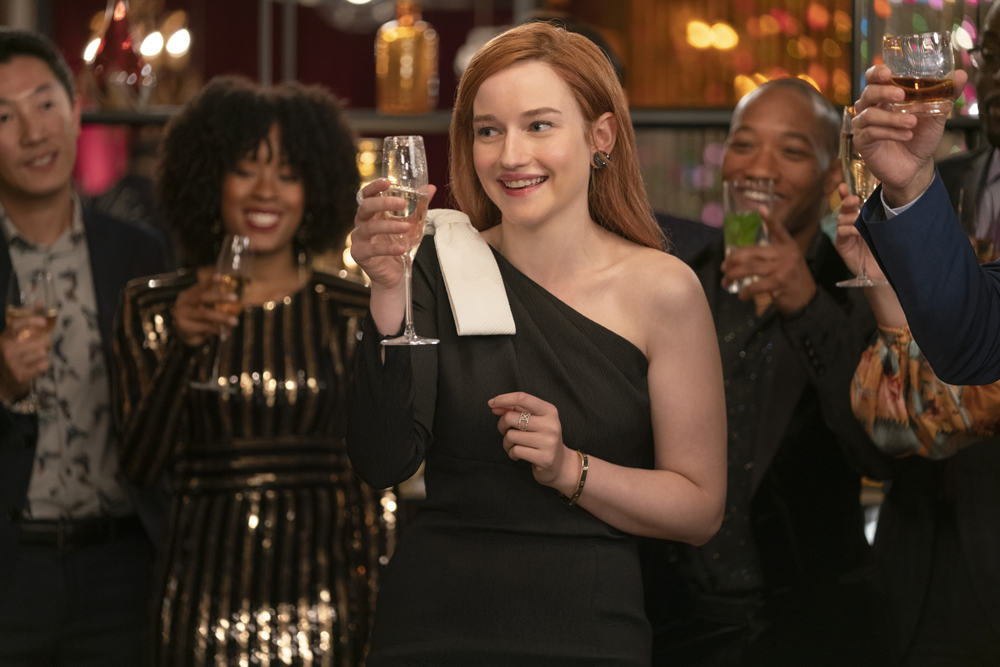
Oh, that’s a really — thank you for that. That’s such an interesting question. And I think it was actually one of the, for me, the joys of this show; that Shonda presented us with a real person, but that person — and this is going to sound strange — we couldn’t really get a handle on who the real Anna was, ever. And I think that’s in the story. I’m a huge murder mystery buff and I’m terrifically old, old school. Like, I love Agatha Christie. So it was an intriguing process because we had to figure out the real Anna and we went through a a three-month process of looking at her websites, any social media that was still up, because a lot of it wasn’t at that point, it had been taken down. We were trying to do the same thing you see Anna[ Chlumsky]’s character trying to do on the show. If you look at that wall in Vivian’s child’s bedroom, that’s basically not just our research, but everyone’s research on the show. And we tried to replicate every single image that we could of the real Anna. And, um, with all due respect to the real Anna, I wasn’t impressed with her fashion. I was like, why, why on earth was everyone so obsessed by this young lady? I mean, she wore black all the time. It was pretty much always the same little black Alaïa dress, a little bit of Rick Owens but nothing tragically high brow in any way.
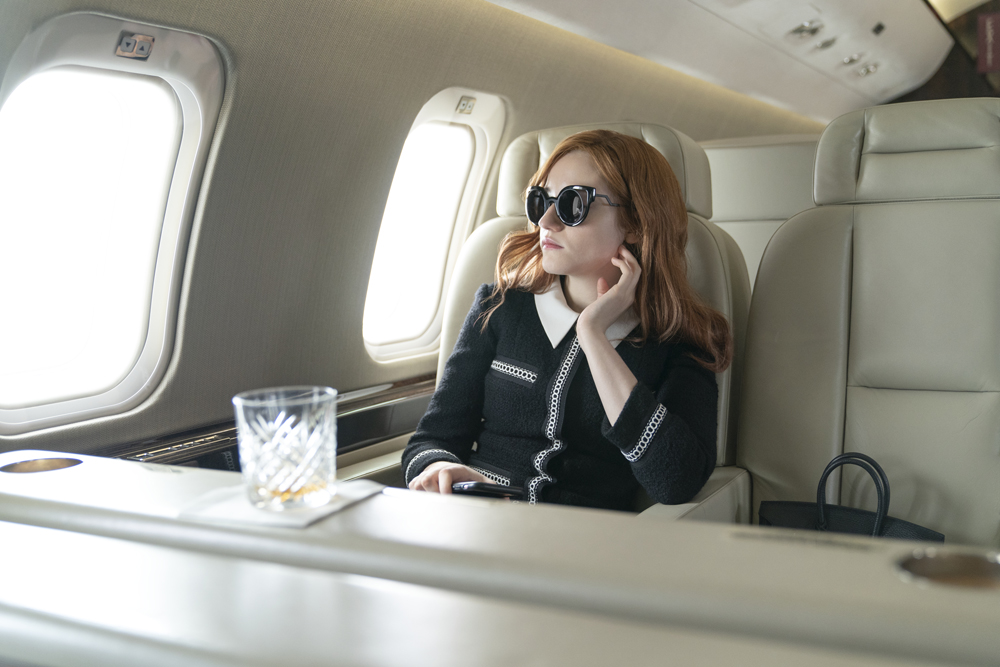
So that, that was the first part of our research. And I love the way Shonda edited this show; all the images of Anna that just flowed across the screen, just to establish that character for the audience. I don’t know if the audience will realize just how complicated that whole process was and the number of still shoots and the layers of research and the amounts of racks and racks of clothes that went into just creating that part of the show.
When we saw the whole collage of Instagram shots together, the first thing that crossed my mind was “Oh my God, that is so many looks that had to be put together.”
What’s really interesting: they were all head to toe. We did every outfit head to toe, nothing was skimped on. And then everything was so cropped because when you take a selfie, it’s sort of shoulder up, isn’t it, with your pals? So you don’t even see the half of it, which was insane.
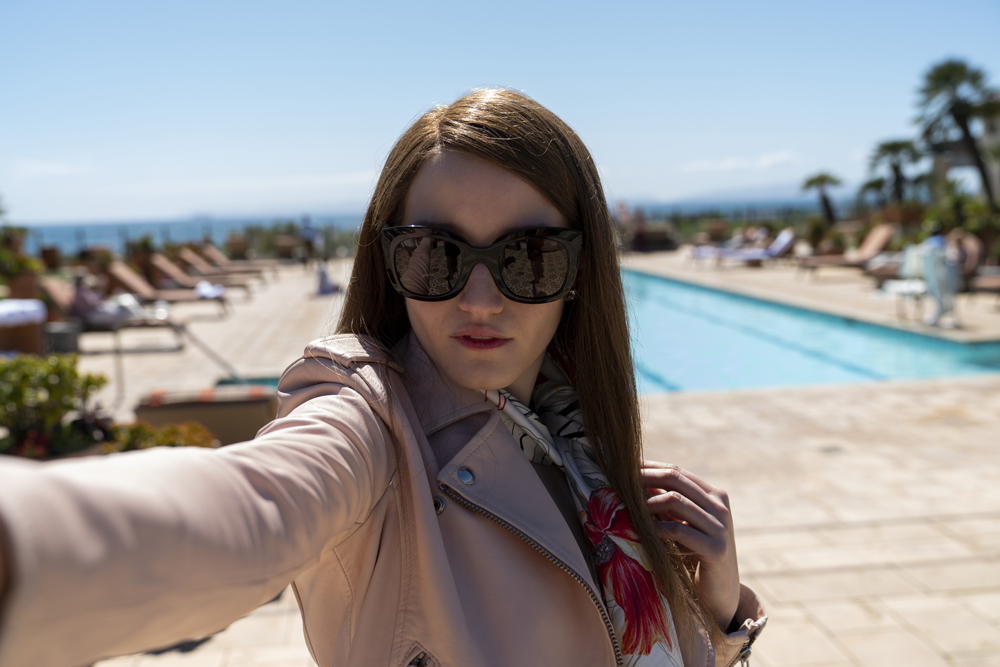
Don’t you think that actually helps the actors themselves if they’re in full costume?
Oh my God, you’re so right. I mean honestly, the creative and the financial are always sort of the yin and the yang on any production. But yeah, I’m a huge advocate for the idea that you’ve got to be standing in the right shoes to feel like you’re the right person, you know? Even if you don’t see it as the audience. And it’s so funny you just said that because Alexis Floyd, who plays Neff, just texted me to say, “Those coats and everything you put me in, it made me feel like Neff. It made my performance better.” She won’t mind me saying that. I always say at the end of a fitting, “Do you feel like her? Do you feel like this helps you at this moment?” I think that’s the real part of the job. I think that’s what we love about costumes; that it’s not just dressing people, you’re creating a character, bit by bit, layer by layer, from the underpinnings all the way up. I’m working right now for Shonda on a period piece here in London and just the amount of work that goes into the underpinnings on a period show! I think the audience is learning though, because of talented people like you, and also because of other elements, like social media; they’re getting a little more canny about all that, don’t you think? They’re learning how it’s done.
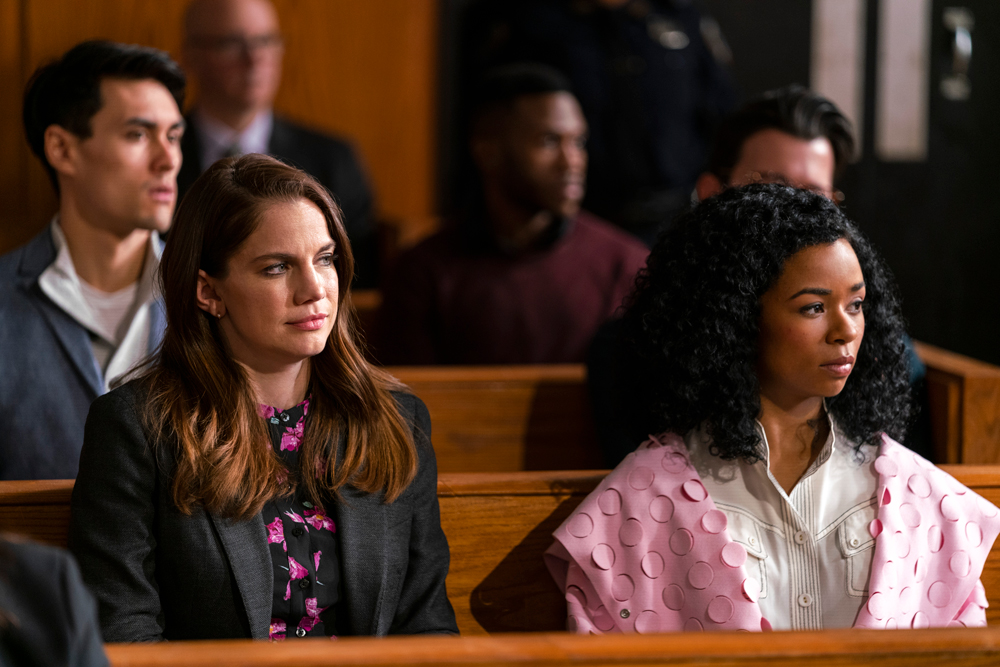
Oh, yes. We’ve been obsessed with costume design for a long time, and I remember there was a time when it seemed like nobody talked about it; now everyone talks about it. It’s interesting you just said you were working on a period piece, because I think it’s sometimes easier for the audience to look at a period piece and really see and take note of the costume design, but they’re not necessarily primed to see the average contemporary drama as a costume piece. You’ve done a lot of contemporary costume design, how do you approach it to make sure that your DNA as a designer is in them?
I feel there are a couple of answers to that question for me. Yes, I have done a lot of contemporary shows, because of John Wells, who I work with quite a lot and now Shonda of course. Early on in my career, I was working on ER, and that show allowed me to stay home with my kids. It was an amazing show for me on so many levels and it was an enormous hit, but I remember at one point someone asking me, what did I do all day? Because you know, there were no clothes on that show. And I remember being so appalled and thinking, “Oh my God, this person thinks I’m like, out getting my nails done.” And it was a really difficult show. It’s one of the hardest shows I’ve ever done. I tried to explain to them that I had to sell who a person was within eight to nine seconds while they were on a gurney and George [Clooney] and Noah [Wyle] and Tony [Anthony Edwards] were wheeling them down a hallway, like, “middle-class housewife with a broken hip,” you know? So that show was actually, I think the best learning curve for me.
But I told John Wells, the writer/producer, that story. I said, “I’m so upset, Johnny. I’m here for 12, 14 hours a day. And they think I do nothing all day.” And he said, “But that’s the point. That’s a compliment. They think what they’re watching is real and it doesn’t occur to them on any level that there’s a puppet master behind the scenes.” Which in one sense, was the old-school version of costume design, wasn’t it? That you were sort of hidden behind the organ in the cinema; that you were not supposed to get any attention. But now, because of social media that’s changed dramatically. And I think I still like to be a little bit hidden. Like, I love doing this kind of thing with you, Tom and Lorenzo, but, I don’t usually enjoy, like being on a podcast anywhere where I’m seen or any of that. I think I’m sort of old school. I think people like me who choose to do what we do don’t want to be that well known, but then there are some new designers who have become sort of semi-celebrities, you know? And I feel like, I don’t know, for me, that’s not what I got into this business to do. I just love cinema and I love creating new worlds. Every new job is creating a new world and inhabiting that world with humans and selling that world to an audience and having them love that world or hate that world.
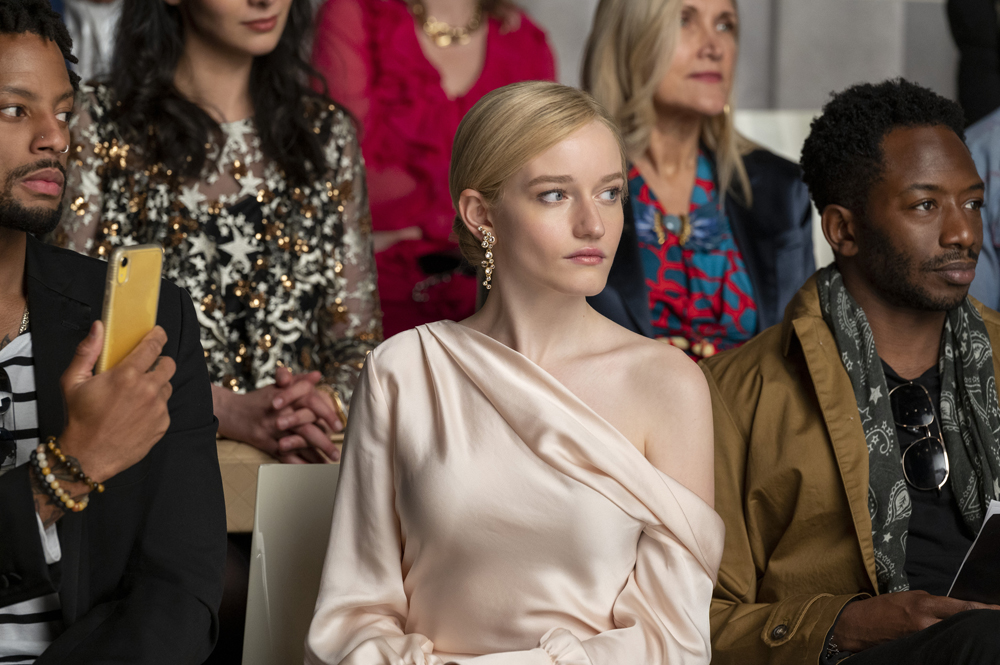
We’ve always argued that costume designers should be considered in the same way that we talk about cinematographers–
Oh, a hundred percent.
In the sense that they contribute so much to the look and to the story and to the creation of a film that they should be singled out as people who are important to that production. Like cinematographers, they might not be, you know, household names, but the people who know, know the names.
Yeah, we all know who Roger Deakins is. Certainly in the world of cinema, we all know who they are. And as we should. That’s the other thing I like in our community, the film world is quite small, really. And look, I’m in London now, it’s growing, it’s much bigger than it was because there’s so much more content, but the core group of people, everyone knows who everyone is. I mean, when I read a crew list, I know who the production designer is, I know who the DP [Director of Photography] is. There are only so many people who work consistently at a specific level. And I think culturally, there’s just so much more room for the audience to know who we are. Everything’s so much more connected in a way.
I think modern costume design is received differently because everything is so instantly meme-able. Promotional materials for films or TV shows rocket around the world within seconds and everyone can look at the costumes for as long as they want long before a film even premieres.
Yeah, I agree. I mean, it’s so interesting because with Olivia Pope in particular, there was always that element of “I’m dressing my daughter as Olivia Pope for Halloween.” And I think of my friend, Robert Morgan, was just nominated for an Oscar; he was the co-designer on Dune. And when you look at the Marvel world and the science fiction world, there’s this whole element of intellectual property for costume designers. If they create a costume, it doesn’t, the image doesn’t belong to them. In a way, if an artist creates a painting, the image belongs to the artist, or a photographer when they create a photo. I think how we’re represented and how costume designers on a whole operate is going to change rather dramatically in the next, I would say in the next ten years, for business issues like that. Creatively, I don’t think there’s been a better time. I chose many years ago to stay in television because I had small children and didn’t want to travel as much because I wanted to stay in LA. But now, for young costume designers, I mean the world is their oyster. There is so much content. You can really pick and choose which part of that world you want to be in. I still love television. It is my first choice. I love the pace. A lot of people don’t like the pace, but I absolutely love it.
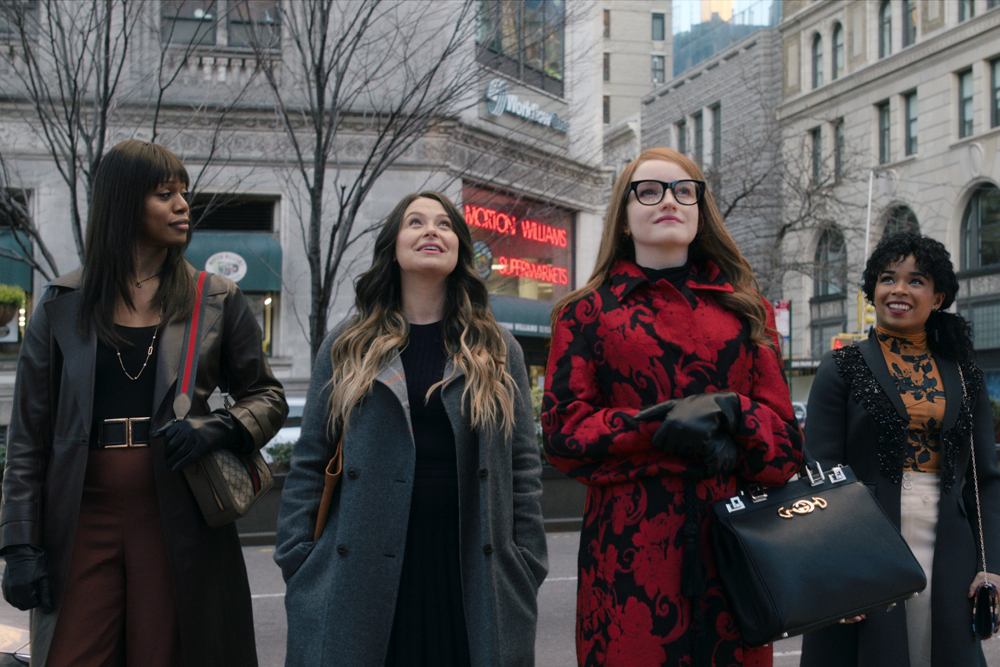
Do you feel with television that you have more time to expand in terms of creating the character?
Yeah, that’s part of the thing for me that I love — every week I get a new script. I absolutely love that part of it, but I also love the fact that you can really work with an actor and really hone who this person is. I’ve been on shows where – certainly on The West Wing, where I could walk through a store and go, “That’s a Toby tie, that’s a Bartlett tie.” I mean, you just sort of get it down to the point where it becomes seamless, but then with every week you still get a new group of characters. So it’s like the gift that keeps on giving for me. And so diverse! I mean, I was in Hawaii this summer working on a new show for John Wells called Ke Nui Road and then in the spring I was working with Susan Sarandon on a horror show, and now I’m in London and I’m doing 18th century, 19th century costumes. So there’s just nothing wrong with being a costume designer, is there? It’s just so fun.
It sounds so fun. Okay, bringing this back to Inventing Anna, what was your process for securing actual designer pieces? I remember Patricia Field probably 15, 20 years ago, talking about Sex and the City; how difficult it was for her to secure clothes from fashion houses at the time because they didn’t want to be involved in projects like that. And look at now; they’re all like jumping at the opportunity.
Yeah. I think we all owe Patricia a debt, to be honest. There was always sort of this stigma with fashion houses; not loaning, not helping television in any way, which I never quite understood, because we reach I don’t know how many millions of households. They were much more focused on the runway because of the celebrity of it all. But now I think, for me, having been doing this for so long and also because of Shonda and other producers that I’ve worked with, I have quite extensive connections in the fashion industry, which really helped me a lot. And specifically on Anna, I think with those connections we were able to source almost everything that Anna wore on, on her Instagram first, which was pretty tricky because they were two or three years old. She’d already gone to prison. So there was that element of it. But then there was the other element of, okay, now we have this much in our budget, but we know we’re gonna need way more outfits, and I called in a lot of favors from a lot of friends who either gave us discounts or loaned items for the show. And I think that end of costume design has exponentially grown since Patricia had those issues on Sex and the City. I think that most designers and most design houses are willing to collaborate now and are happy to collaborate because they see the impact that television and these Netflix shows that have huge followings. It’s unbelievable. I mean, my social media lights up whenever I have a new show on, it’s insane! And then it leads to these other things where just yesterday I had someone writing to me about a coat that Julianna Margulies wore in ER, and I was like, “What? That’s twenty years ago!”
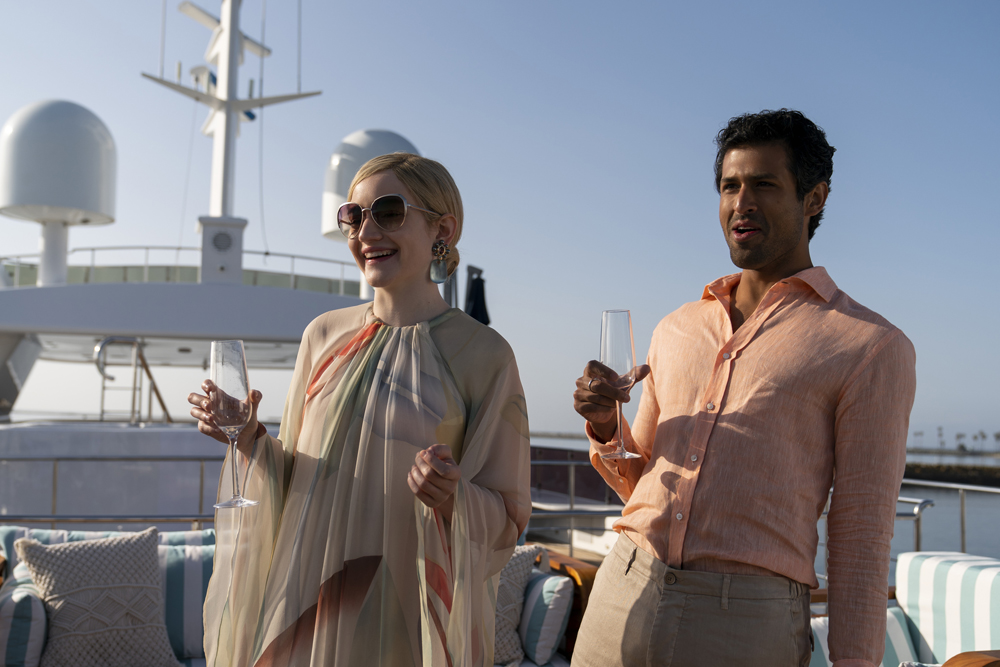
We get emails all the time asking us to identify what characters are wearing in some show or movie. And let me tell you, we got a lot of emails asking about Annalise Keating; specifically wanting to know all the details about her coats and bags.
Well, I’ll tell Viola [Davis] when I talk to her. She one of the best people in the world to dress because she’s like, “Lyn, just do it. What do you want me to wear?” I love her. She’s a true costume designer’s actor.
What was it like working with Julia Garner? I love her in Ozark, but she’s such a different character there.
We would laugh every time she’d come in for a fitting. The crew said they just heard peals and peals of riotous laughter in our fitting room because I would always tease her and say, because you know, she was going back to Ozark very quickly after our show was done. And I was like, “Oh, I can’t imagine what they’ve got on their rack for you after this,” because yeah, I mean what a difference for her, but look at the range. I think she’s gonna be huge — I mean, she’s huge anyway. Don’t you think she’s got a phenomenal career ahead of her?
I absolutely love her and I’m cheering for her. She’s so talented. That’s why I screamed when they picked her to play Anna because she’s perfect for that. She wears fashion so well. We just wrote about her last week that she’s one of those people who can go from Twiggy to Madonna at the drop of a hat.
I keep telling her she should play like a 1930s siren, like a Jean Harlow. She would be perfect. She could rock a really beautiful satin bias cut dress. But then I think she could do anything. That’s the thing about Julia. I think literally any role you give her, she’s gonna transform. I loved her and we loved working together.
One of the funniest lines in the show is when Anna says to Vivian, “You look poor.” It made me laugh because obviously she does not look poor but how did you approach Vivian’s character?
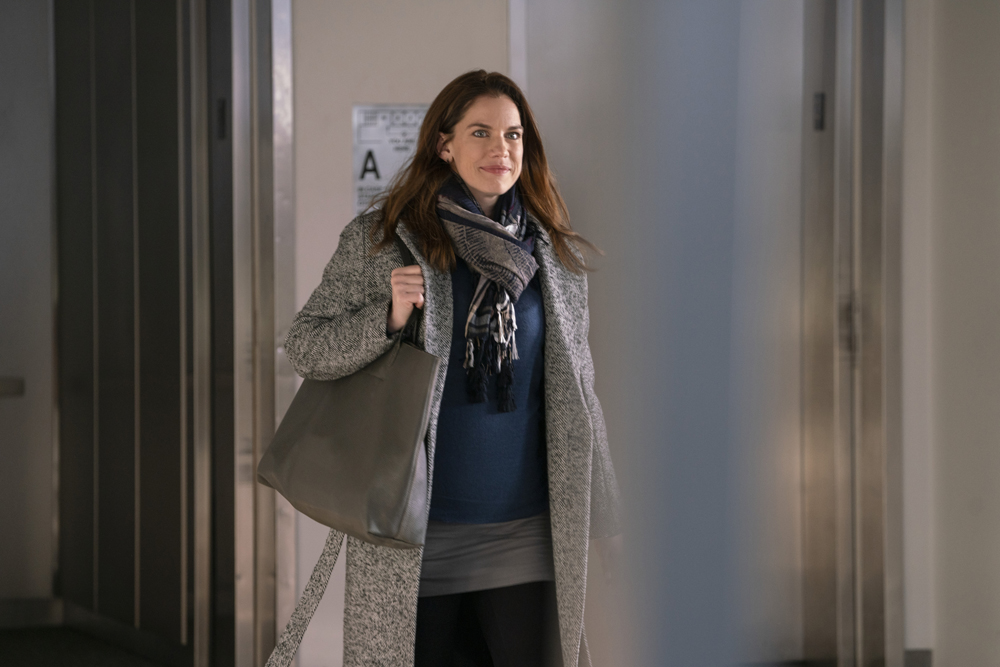
She’s like anybody in her industry, because she’s running around town being a reporter, so she’s, you know, like me when I’m running around town. None of us are sort of all dressed. I’m in my boots and my leggings with my Zadig & Voltaire sweater and a really cool jacket, but none of us are, you know, wearing designer, designer, designer all the time. I think for Vivian, the trick was that we mixed prints and we were never overly conscious about pressing everything and making everything perfect. There was a lot of just let it be wrinkled. Don’t worry about it. It was a lot of Rag & Bone, none of these brands are cheap, they’re all sort of mid, not even mid but upper, you know? And so for her, it was more about the textures, not really working together, in the sense that she was a person, unlike Anna, who just didn’t care about what she was wearing and was more about getting the job done. And then Anna did care about getting the job done, but she knew to get the job done. She wanted to do, she had to sort of create her own character. She was her own costume designer, wasn’t she, really?
Especially during the trial, which she practically stage-managed.
She was very clever because obviously she didn’t have that much money. And she was that old adage of, you know, if you live in New York, you wear black. I mean, she embraced that, didn’t she? Almost everything I saw in was black. It was so she could wear it over and over again. So many real people said, “Oh, she wore that little black Alaïa dress every time I saw her. We just thought she did that because she was rich and didn’t care.” So she built this persona. I find it fascinating.
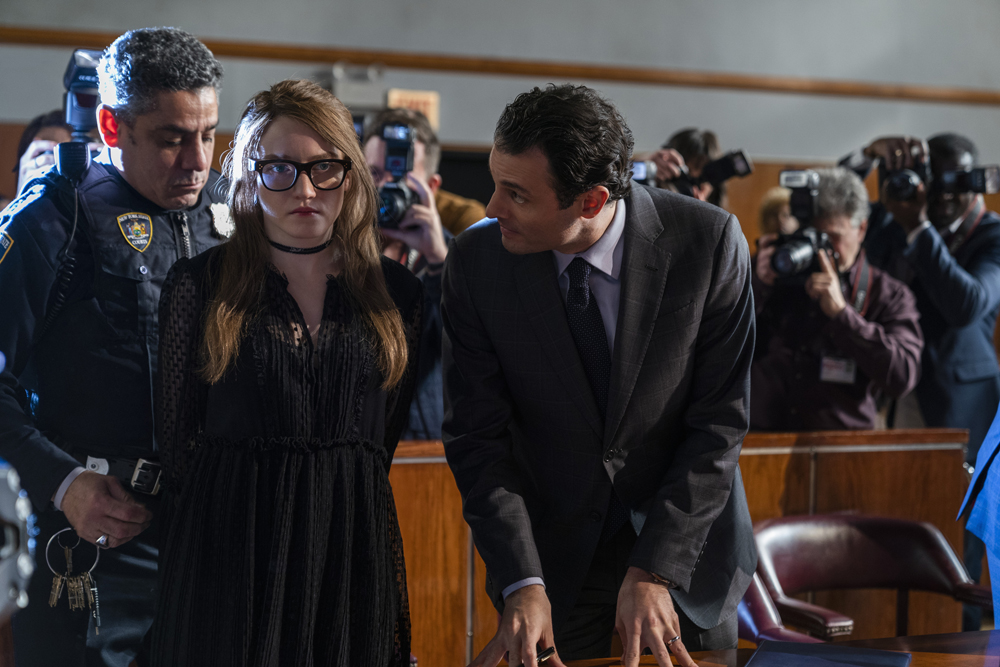
We understand that you found the exact same Alaïa dress, correct?
Yeah, we found three of it, because we were sort of panicked that we couldn’t find it. And you don’t know what you’re getting when you buy secondhand or gently used clothing. We ended up having three and none of them were the right size. We had to cut one down.
So, when it comes to dressing Julia Garner as Anna Delvey, you were creating a character who was herself constantly creating and recreating her own character, exactly like a costume designer would.
And not just once. Many times, whoever she may be, whatever she had to do, she dressed for the part. And so how was that working? What was her process, creating all these characters represented by her? I think also that was another joy in that show because I keep telling everyone there were so many Annas, weren’t there? Not just on her social media pages, but also when you hear people talk about her in interviews. Everyone had a different opinion of Anna. Oh, she was beautiful. Oh, she was skinny. Oh, she was this or that. And so that was something that we literally worked on. We had Financial Anna with the Anthony Edwards storyline, and so we’d have a rack of clothes that were just suits and it would say “Financial Anna,” and then there would be another rack of clothes and it would say “Morocco Anna,” and it would be, you know, party clothes. And we ran the gamut from thousands of dollars for a jacket or a dress down to the high street shops. The dress that she asked to jump in the swimming pool, I think it was a couple hundred bucks. Our budget for that show was not much, but you can’t tell. It looks like it could be a designer item because Julia makes everything look amazing and she’s so easy to dress and so game to try on anything. I mean, there were, you know, we’d get things in and they would be sort of outlandish, I’d look at it and go, “I don’t know…” and she’d go, “Let’s put it on, Lyn! Let’s give it a go!”
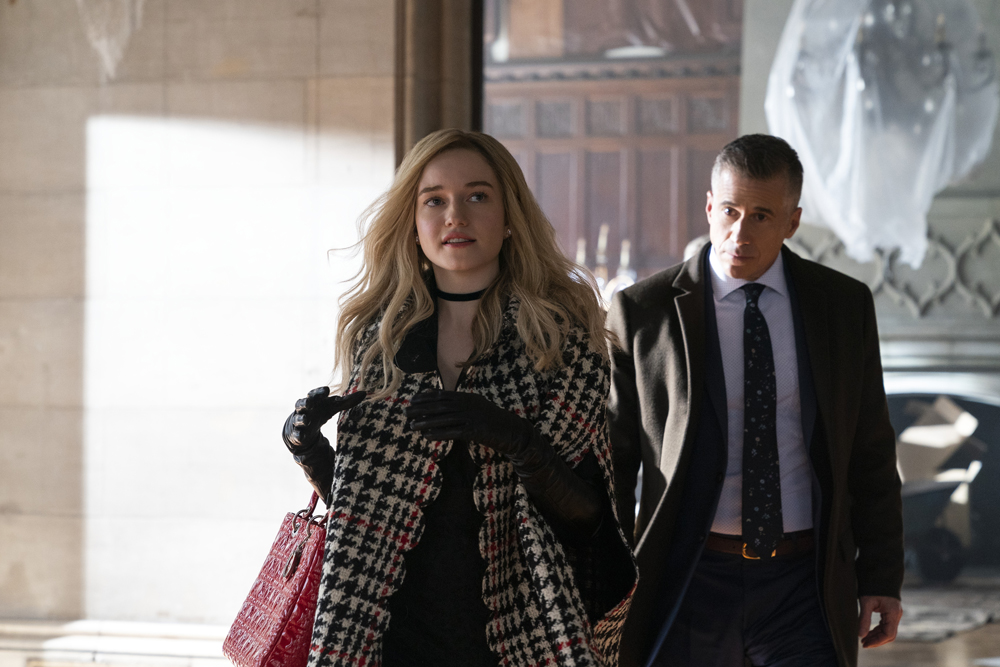
Anna Delvey was obsessed with high fashion labels, but do you think the fictional Anna is a little showier than the real one?
Oh, absolutely. I think, um, you know, I’m a little nervous to say anything about the real Anna, I mean I’m like, “Wait, does she know where I am?” I’m joking. But yeah, I think we elevated Anna. I do. I mean, I have to be honest, I looked at her social media and I wasn’t, as I said at the beginning of our interview, I didn’t see it. I didn’t understand it. To be honest, I still don’t understand how any of this happened. I spent two years learning everything about Anna and I still don’t even know who she is. Julia went to meet her and she came back and I said, “Tell me,” and she goes, “I still don’t know.” She’s an enigma, which I think, some people watching the show and some critics don’t understand that. I think that at the end of it, I thought it was great because really, none of us knows how this young lady did this. She almost made it too. I mean, she almost did it. I know if she had opened that club, we’d all be wanting to get in there, wouldn’t we?
We said the same thing! If she hadn’t been caught, she’d have gone all the way. Well, we know you’re busy, so thank you so much for your time —
Can I just say something to you two? Because I really enjoyed this interview, and it shows that you like what we do, that you enjoy what we do, and that you understand it. So many times I do interviews and I don’t think there’s an understanding. So I’m very grateful to you both.
Oh, you’re gonna make us cry! Thank you again!
This interview has been lightly edited for clarity. Check out our interview with The Gilded Age costume designer Kasia Walicka-Maimone.
[Photo Credit: David Giesbrecht/Netflix, Nicole Rivelli/Netflix]
Maluma and His Dog for Versace’s Spring 2022 Ad Campaign Next Post:
Cate Blanchett in Armani Privé at the Goya Awards: IN or OUT?
Please review our Community Guidelines before posting a comment. Thank you!


